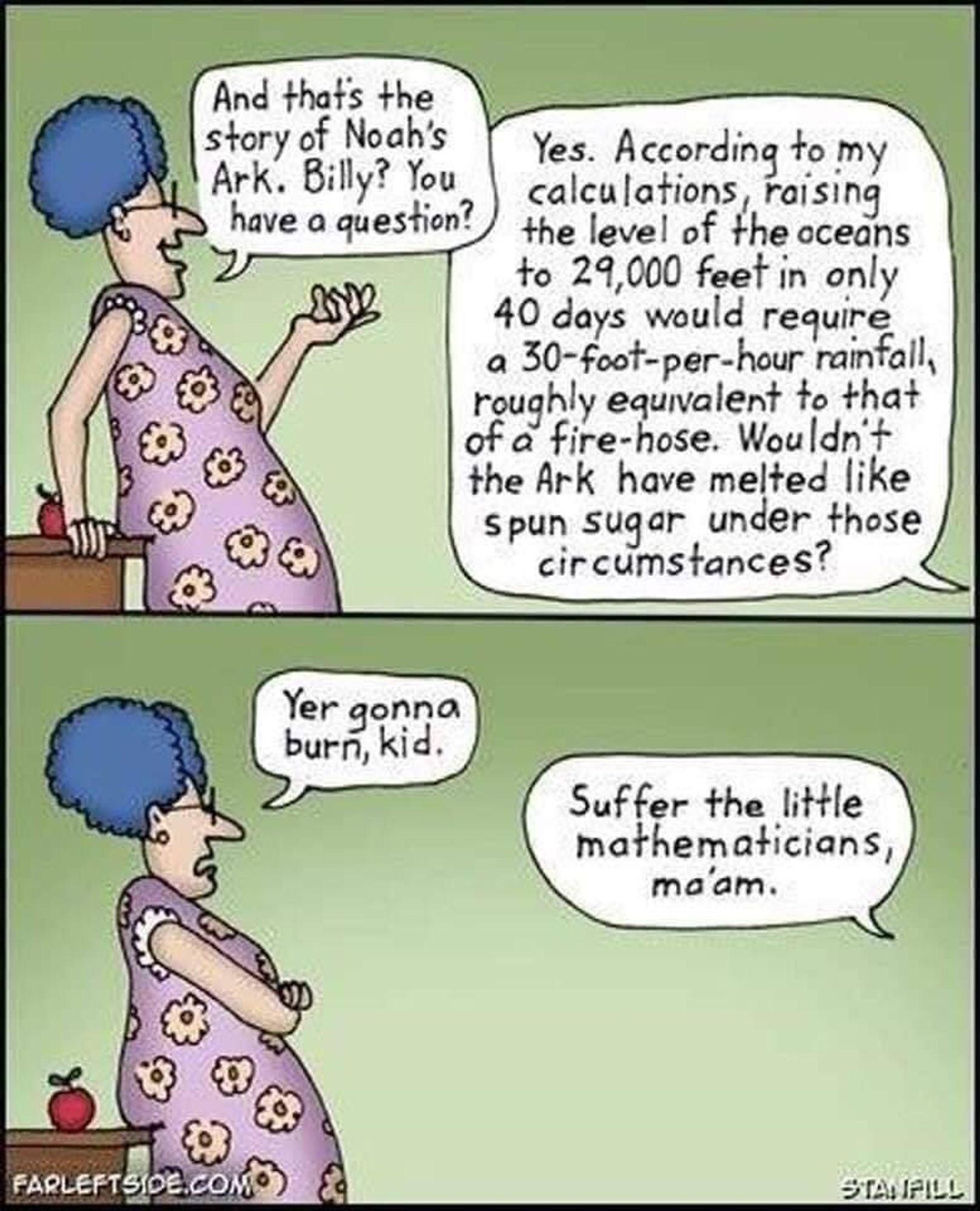this post was submitted on 10 Mar 2024
941 points (94.3% liked)
Comic Strips
12763 readers
3988 users here now
Comic Strips is a community for those who love comic stories.
The rules are simple:
- The post can be a single image, an image gallery, or a link to a specific comic hosted on another site (the author's website, for instance).
- The comic must be a complete story.
- If it is an external link, it must be to a specific story, not to the root of the site.
- You may post comics from others or your own.
- If you are posting a comic of your own, a maximum of one per week is allowed (I know, your comics are great, but this rule helps avoid spam).
- The comic can be in any language, but if it's not in English, OP must include an English translation in the post's 'body' field (note: you don't need to select a specific language when posting a comic).
- Politeness.
- Adult content is not allowed. This community aims to be fun for people of all ages.
Web of links
- !linuxmemes@lemmy.world: "I use Arch btw"
- !memes@lemmy.world: memes (you don't say!)
founded 1 year ago
MODERATORS
you are viewing a single comment's thread
view the rest of the comments
view the rest of the comments

There's a number of places where Old Testament stories may actually be describing the stories of Bronze Age Libyans who end up relocated into the Southern Levant along with the sea peoples. Joseph with a colorful coat and an interpreter of dreams is sometimes likened to the Hyskos but compare the coat vs the depiction of the Libu. Not only are the Libu sporting blue in their coats, like the tekhelet later found in the OT, there's even the Tuareg Libyan people known for their blue dye and matriarchal lineage.
Around the time that tomb image is recorded there's even a papyrus talking about how the followers of Set have red hair and interpret dreams, and this is also the period when the Egyptian story "A Tale of Two Brothers" emerges with a number of similarities to the Joseph story.
This is interesting in light of the flood mythos because we now know that at the end of the ice age there was a migration down from Europe across the ice bridge to North Africa. This was around the time there really was coastal flooding including relatively rapid events which may have even persisted in local oral traditions.
Part of the issue with analysis of Biblical stories in terms of historicity (outside of the supernatural stuff) may be that we're analyzing a collection of stories that had been syncretized into a local tradition and later appropriated, much like the story of 'Israel' (Jacob) taking the birthright and blessing of Esau (the eponymous founder of Edom, meaning 'red') in the Bible.
In fact, according to the Dead Sea scroll fragment 4Q534 Noah had red hair.
So it need not even necessarily be that there was flooding in the Southern Levant for the flood mythos to be based on an oral tradition.
All that said, personally I'm rather persuaded by Idan Dershowitz's analysis that the Noah story was originally a story of drought and famine before syncretizing the Babylonian flood mythos into it later on and transforming it into a flood epic.